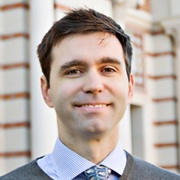India has opportunity for ‘big bang’ economic reform, says US expert
24 Jul 2015
 ''Big bang'' economic reforms could generate a significant dividend for India, according to a working paper by Russell Green, an India expert and economist at Rice University's Baker Institute for Public Policy.
''Big bang'' economic reforms could generate a significant dividend for India, according to a working paper by Russell Green, an India expert and economist at Rice University's Baker Institute for Public Policy.
The study should motivate the political leadership in India's state and central governments to pursue reforms ambitiously and remove barriers to labour-intensive manufacturing, Green said.
The paper, Structural Change Forecasts for India: How Big of a Bang Can a Big Bang Have?, applies a rigorous approach to developing a simple 20-year projection of growth and employment in India.
It asks, ''What could happen if India's government implemented big-bang reforms sufficient to achieve East-Asia-style manufacturing growth?'' Green's projection exercise assumes a structural break in the manufacturing sector due to major policy changes that would promote labor-intensive and higher-productivity sectors.
The question of structural change in India has returned to the forefront of policy debates with Prime Minister Narendra Modi's high-profile ''Make in India'' campaign to ''transform India into a global manufacturing hub,'' said Green, the Baker Institute's Will Clayton Fellow in International Economics and adjunct assistant professor of economics at Rice.
He served as the US Treasury Department's first financial attaché to India from 2008 to 2011.
''Structural change involves shifting (India's) economic activity - including its labour force - toward higher-productivity activities,'' Green said. ''Almost half of India's labour force works in extremely low-productivity agriculture, and most of the rest works in low-productivity informal activities. The potential for welfare improvements from successful structural change strategies has always been massive, and the political environment exhibits a new determination to take the necessary steps.''
According to Green's simulation, India's formal manufacturing sector could grow to attain 27 per cent of gross domestic product from the current 11 per cent. ''Two implications of these results are worth noting,'' Green said. ''First, the policy-change scenario forecasts that 15 per cent of the workforce could be employed in high-productivity industries in the formal manufacturing sectors and modern services. As a comparison point, I have previously estimated that almost half the Indian workforce will have finished high school by 2035, double the share today. This would represent a dramatic improvement over the current workforce.
''The potential rise in education levels above current industry need raises the question of where these workers will find work that will take advantage of their improving education,'' Green said. ''Another way to look at the potential mismatch is via Say's Law, which states that supply creates its own demand. It would suggest that businesses that can effectively utilise a better-educated workforce will grow faster on the back of a growing skilled labour supply. Expectations of much better educational attainment would suggest that the projections presented here may be too pessimistic.''
Green did find that Modi's ''Make In India'' goals of manufacturing reaching 25 per cent of gross domestic product and creating 100 million new jobs by 2022 are worthwhile for inspirational purposes but do not appear to be realistic.
''The latter does not even appear realistic in a 20-year time frame,'' Green said. ''But nobody would be upset about achieving 75 million new manufacturing jobs, which might be realistic with the right basket of reforms.''
'''Big bang' reforms could generate a significant dividend for India under plausible assumptions,'' Green said. ''This study should provide motivation to the political leadership in state and central governments in India to pursue reforms ambitiously to remove barriers to labor-intensive manufacturing.''













.jpg)






.jpg)









